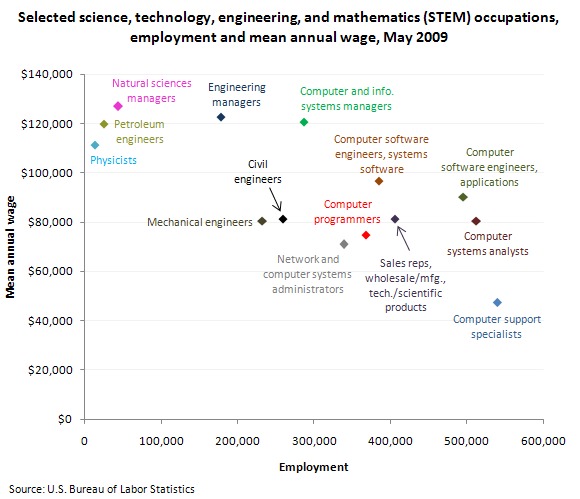STEM Occupations Maintain High Salaries

The statistics from 2009 show how people is STEM occupations (selected science, technology, engineering, and mathematics) are earning much more than the average national salaries.
The mean annual wage for all STEM occupations was $77,880, and only 4 of the 97 STEM occupations had mean annual wages below the U.S. average of $43,460.
The highest-paying STEM occupations in May 2009 had mean annual wages of $100,000 or more, and included all of the managerial STEM occupations, petroleum engineers, and physicists. Natural science managers was the highest-paying STEM occupation with a mean annual wage of $127,000.
How have these high paying professions come to be the ones most valued in our society? Answers to this question go back far into history. In the meantime, it may be worth figuring out if students are given equal opportunity to pursue these highly paid professions. For instance, can universities help to ensure women are given the same encouragement as men to gain experience in a field like engineering? Too often, it seems like the loaf is being divided by a biased knife.


